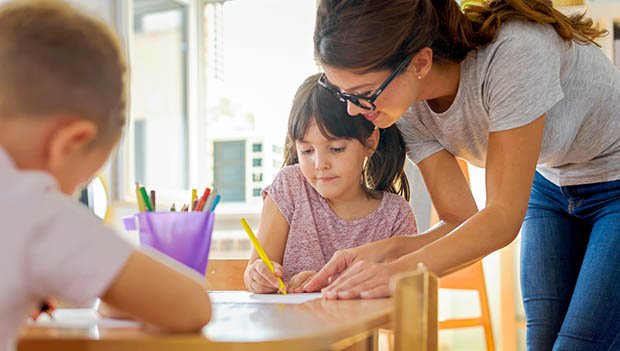Effective Communication in Parent-Child Relationships
Unlock the secrets to Effective Communication in Parent-Child Relationships for a harmonious family life. Learn essential tips, insights, and FAQs to foster strong connections.

Introduction
As a parent myself, I know how important communication is in building strong relationships with my children. The way we talk to and listen to each other greatly impacts our connection and understanding. Poor communication can lead to misunderstandings, hurt feelings, and conflict, while positive communication fosters trust, cooperation, and emotional closeness.
In this post, I will explore various aspects of parent-child communication and provide tips for creating an environment where open dialogue can thrive. Effective communication is the foundation for nurturing empathy, respect, and compromise between parents and children. While it does not always come naturally, with awareness and practice families can develop communication skills that will serve them well throughout life.
What is Effective Communication?
Before delving into parent-child dynamics, it helps to define what constitutes "effective communication." At its core, effective communication is about understanding. It is a two-way process of sending and receiving messages - not just exchanging information, but ensuring the intended meaning is understood by the listener. Some key attributes of effective communication include:
- Active listening. Making eye contact, facing the speaker, not multitasking, reflecting back what you heard to confirm understanding.
- Clear expression. Using simple, direct language and examples to convey thoughts and feelings in a way the other can grasp. Paraphrasing to confirm the message was received as intended.
- Openness. Feeling comfortable sharing thoughts and feelings freely without fear of judgment or repercussion. Creating psychological safety for both parties.
- Compassion. Communicating with care, concern, and respect for the other person's perspective. Suspending assumptions and checking perceptions are accurate.
- Constructiveness. Having a goal of understanding each other better rather than "winning" an argument. Finding points of agreement and compromise versus dwelling on disagreements.
- Timeliness. Addressing issues when they arise rather than letting misunderstandings fester. Also, being available and making time for communication when needed.
With effective communication habits, parents and children can resolve conflicts in a healthy manner, understand each other at deeper levels, and build a strong foundation of trust.
Listening Skills Are Paramount
One of the most important yet challenging aspects of communication for both parents and children to develop is active listening. Since parents tend to dominate conversations, children may not get the opportunity to feel fully heard or understood at times. Some listening dos and don'ts include:
- Make listening your priority over planning your response. Fully focus on what the other person is expressing without distraction.
- Maintain eye contact and body language that shows interest like open posture. Nod occasionally to confirm you're following along.
- Reflect back what you heard to verify understanding, such as "It sounds like you felt frustrated when..." Ask clarifying questions respectfully if needed.
- Don't interrupt or finish the other's thoughts for them. Wait until they're completely done speaking before offering your perspective.
- Don't dismiss or criticize what you're hearing. Withhold judgment and try to understand the other's point of view on its own merits.
- Pay attention to emotions behind the words through tone of voice and body language ques. Feelings are often more important than facts.
- Summarize the key points concisely when the other pauses to confirm comprehension before responding yourself.
Mastering listening is not innate for many. But with diligent practice over time, both parents and children can learn to listen actively - a skill that serves lifelong relationships well. Strong listening is the bridge to understanding each other at deeper levels.
Developing Trust Through Openness
Another pillar of effective parent-child communication is creating an environment of openness and trust. Children should feel comfortable bringing up any topic and knowing they will be heard without repercussion. Some suggestions for cultivating trust include:
- Validate children's feelings without judgment when they share difficult emotions. Say things like "It makes sense that situation would make you feel that way."
- Apologize if you've made a mistake in understanding their perspective and correct any misperceptions to model accountability.
- Respect privacy needs as children get older but make it clear your door is always open if they want to discuss anything.
- Share some of your own experiences, thoughts, and feelings too so communication feels more balanced and mutual.
- Set aside regular one-on-one time without distractions each week solely for connecting through conversation.
- If a topic seems too difficult, agree to revisit it later when emotions have calmed rather than avoiding it entirely.
- Stick to agreed upon consequences consistently so children learn they can depend on your follow through and fairness.
When children feel truly heard and understand parents are approachable, honest dialogue becomes the norm rather than hiding things out of fear of reprimand. This openness is healing for relationships.
Using "I" Statements And Active Listening
A skill that plays an important role in facilitating understanding and reducing defensiveness during discussions is using "I" statements. By focusing on personal experiences and viewpoints rather than accusing others, conversations can remain constructive. Some examples of effective "I" statements include:
- "I felt worried when you didn't answer your phone last night."
- "I'm having trouble understanding your perspective on this issue."
- "This situation makes me feel frustrated because..."
- "I appreciate you sharing how you see it. From my view..."
- "Something that bothers me is..."
Parents can model "I" statements and then encourage children to express themselves this way as well. Repeating back to each other what the key points are from the other's perspective also keeps communication active. Phrasing things objectively with "I feel/think" rather than "You did..." or "You're wrong" invites open-minded problem solving versus defensiveness.

Addressing Conflicts Constructively
Disagreements and conflicts are inevitable aspects of any close relationship that require adept communication to overcome. Instead of avoiding touchy subjects, parents need methods to work through issues constructively with empathy, care and repair. Some best practices for addressing family conflicts optimally include:
- Schedule a time when everyone is calm and has time to fully participate. Discuss one issue at a time.
- Have all parties take turns sharing their experience and perspective without interruption from others.
- Actively reflect back to confirm you understand each other's viewpoints and emotions fully before moving forward.
- Search for common ground and points of agreement to build on rather than getting stuck on differences.
- Compromise when possible rather than either side needing to get their way completely. Look for win-win solutions.
- Address only the present situation and avoid bringing up past issues unless directly related.
- Agree on next steps including specific changes and then check in later about progress and experience.
- Express care, appreciation and affection for one another despite disagreements to strengthen bonds.
With a mutually respectful process, even high-stakes conversations around difficult topics need not damage family relationships and can result in new levels of understanding.
Finding Constructive Ways To Express Emotions
Raising children requires patience even on the best days. For parents, learning to regulate their own emotions effectively sets a positive example and improves how they communicate during stressful times. Some suggestions include:
- Take deep breaths and pause before responding when feeling upset or overwhelmed to avoid reactive words later regretted.
- If becoming angry, excuse yourself until calm enough to discuss the issue respectfully. Children feel less insecure this way.
- Express disappointment, hurt or frustration through "I feel..." statements rather than accusations to invite resolution.
- Praise efforts and acknowledge feelings even when discipline is necessary to reinforce the child as good rather than bad.
- Discuss difficult topics later when calmer by saying “I need time to think before discussing this fully.”
- Be open about your emotions too so children see you as human rather than robot. Share calming strategies for self-care.
With compassion for each other during emotional conversations, understanding can emerge where otherwise conflict might have occurred. Keeping communications respectful and focused on resolutions builds family trust and resilience.
Overcoming Communication Barriers
No family dynamics are perfect. At times communication challenges may arise despite best efforts. Some common barriers parents should be aware of include:
- Expecting children to read minds rather than stating clear needs, directions or expectations.
- Lack of quality listening time due to busy schedules leading to misalignments forming.
- Allowing technology use during talks or not giving full attention to the interaction.
- Making assumptions without validating perceptions are accurate from the other viewpoint.
- Parental burnout causing irritability, sharp or closed off responses rather than patience.
- Cultural or generational divides in comfort levels discussing emotions or topics.
- Struggling to see issues from another family member's perspective objectively.
When communication roadblocks like these emerge, revisiting basics of intimacy habits, scheduling time for talks, stating needs directly, expressing care and suspending judgment can often remedy breakdowns to get discussions back on track. No one is perfect, so forgiveness and flexibility are key when friction arises.
FAQs
What's Your Reaction?




















